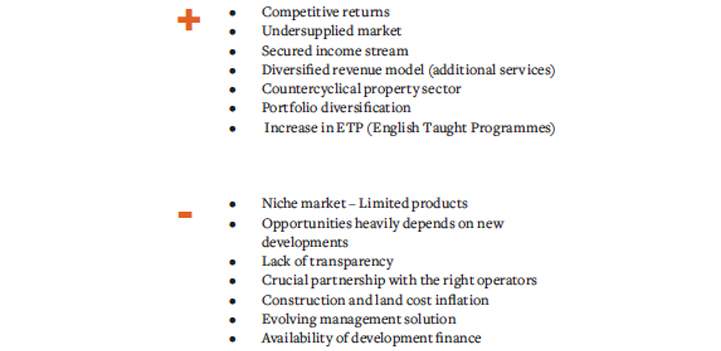2020, towards another peak for student housing investment
Last year the student housing investment volume reached €8.8bn, a new recorded high (€8.3bn in 2015), reflecting the shift towards alternative sectors that offer income stability even at a cyclical downturn.
Exceptionally strong investment activity was recorded in the UK (+84% YoY to €6.2bn) and France (+232% Yoy to €1.2bn), where large portfolio deals were closed. This includes notably the acquisition by Unite of Liberty Living Group Plc, one of the UK’s leading providers of purpose-built student accommodation for £1.4bn (€1.6bn). Student Castle sold a portfolio of seven best-in-class student properties to Singapore Press Holdings Limited for £448m (€515m). DWS bought a UK-based portfolio of 3,198 student housing beds from Vita Group for £600m (€690m). In France, AXA IMRA acquired the Kley student housing group from Oaktree.
In 2020, the UK will continue to drive rocketing investment volumes, whereas growing interest in the industry in other European countries will continue to push specialist developer owner-operators towards new developments
Savills European Research
2020 got off to a flying start with Blackstone’s recent acquisition of the iQ student housing portfolio (UK) from Goldman Sachs and Wellcome for £4.7bn (€5.4bn). Based on the strong activity recorded since the beginning of the year, we expect the investment volume to reach €6.5bn at the end of the quarter and to exceed the €11bn threshold at year-end.
The UK will still account for the large majority of that volume, followed by France, Germany and the Netherlands, where the expanding stock slowly enables investors to look into consolidation and portfolio opportunities. We believe in 2020, investors’ enthusiasm for the industry will increasingly spread across Europe, notably in Ireland, Spain, and Portugal, where specialist developer owner-operators will continue to play a key role in the expansion of the sector.
Compared to other asset types, student housing is catching great attention from international investors. On average over the past five years, the share of cross border investment accounted for 58% compared to approximately 50% across all asset classes. The largest cross border institutional players seen on the European market over the past 24 months include Blackstone, Unite Students REIT, DWS Group, Singapore Press Holdings and AXA IMRA.
Growing investor interest combined with limited available supply has put downward pressure on prime yields. The average prime student housing yield moved in by 44 bps and is currently at 4.4%, ranging from 3.7% in Munich and 5.5% in Warsaw.
The yield discount that student housing offers over other asset classes ranges between 128bps over prime multifamily and 94bps over prime CBD-offices. Additionally, the low interest rate environment across Europe offers an attractive yield spread of 434bps for prime student housing properties.
Student housing as an asset: Pros & Cons

Student mobility: the game-changer
At a time when unemployment rates reached lows across Europe, and the prospect that the ageing population will soon be affecting negatively the growth of student numbers, international student mobility matters. The development of the European student accommodation sector has become closely tied to the growth in international enrolment across the continent. Not to mention that international students are the most captive client base as they are generally unfamiliar with local housing markets.
Between 2007 and 2017 the number of internationally mobile students grew by 64% to over 5 million globally, according to UNESCO. They are forecast to reach 8 million by 2025. In 2017 in Europe, there were 19.8 million tertiary education students, of which 1.7 million were from abroad according to Eurostat. More than one-third of the international students were from Europe, 30.1 % were from Asia and 13.0 % were from Africa. Some 25% of the total international students were studying in the UK, far more than in any other EU Member State.
